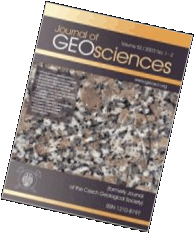Original Paper
History of the Jáchymov (Joachimsthal) ore district
Journal of the Czech Geological Society, volume 42 (1997), issue 4, 127 - 132
Jáchymov was founded in 1516 in place of the former abandoned village Konradsgrün, following discovery of a rich silver deposit. During the first twenty years, the town witnessed a remarkable boom, becoming in 1534 the second largest town in Bohemia, second only to Prague. Jáchymov became an important cultural centre, hosting Agricola, Mathesius and many outstanding personalities of the time. Latin school was founded in Jáchymov; a major part of library assembled in this school was preserved till present. The coins minted in Jáchymov were named after the German name of the town "Thaler", later "tolar", the name which during time was adopted as the name of the USA currency. A mining school was founded in Jáchymov in 1716. The history of the town witnessed periods of expansion and episodes of decline due to wars, fires, plague epidemic waves, and economic problems. The original interest in silver was substituted by mining of cobalt and nickel, later on, uranium was used for production of uranium colours and separation of radium compounds for medical application. The last major mining expansion took place after the Second World War, with extensive mining and ore dressing of uraninite and its exports to USSR. The ore district was exhausted and mining terminated by 1964. Springs of radioactive water taped in the mines are used since 1906 for curative application in local spa.
Webdesign inspired by aTeo. Hosted at the server of the Institute of Petrology and Structural Geology, Charles University, Prague.
ISSN: 1803-1943 (online), 1802-6222 (print)
email: jgeosci(at)jgeosci.org


IF (WoS, 2024): 1.3
5 YEAR IF (WoS, 2024): 1.4
Policy: Open Access
ISSN: 1802-6222
E-ISSN: 1803-1943
 Export to Mendeley
Export to Mendeley